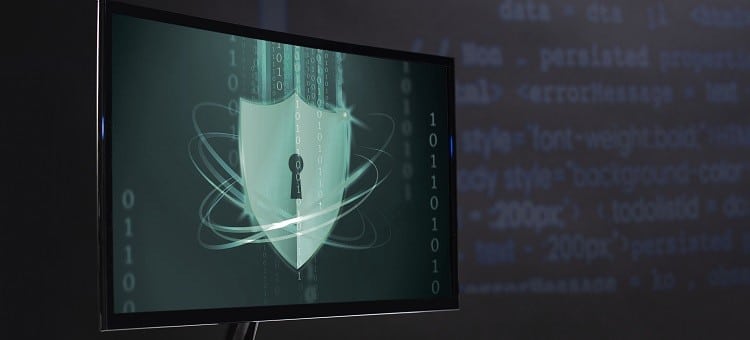Cyber security and IT security are almost synonymous, while data security is their subset. The concept refers to the protection of your network, server, data, and computing devices from malicious attacks. The global cyber threat is rapidly rising with thousands of data breaches every year.
Medical services, retailers, and public entities experience the maximum breaches as these companies hold huge financial and medical records. It means the prime goal of hackers is access to data. So it is crucial to ensure data security to keep your business and customer information safe.
If you follow the proper IT security protocol, it will protect your entire cyber system. Cybercriminals target businesses for customer data and corporate spying. Consequently, many outsourced after-hours support centers include cyber security in their services.
In this post, we will discuss everything about cyber systems and security, their benefits, procedures, etc. So stay with us for better security planning for your IT setup.
Navigation:
How Can You Differentiate Cyber Security, IT Security, and Data Security?
IT security defines how to protect an organization’s digital networks, devices, systems, servers, and other online assets. Cyber security is one segment of IT security that covers almost all aspects of IT setup.
While cyber security and IT security are not different, IT security prevents unauthorized access to devices and digital assets. And Cyber security congregates policies and actions to protect the digital setup of the organization. For in-depth knowledge, you can read What Is Cyber Security All About? The security protocols include password-protected devices, databases, and encrypting sensitive information.
So protecting data, technologies, and storage sources from threats is cyber security. On the other hand, protecting data from unauthorized access refers to data security.
In short, cyber security defends the cyber system and associated data. Likewise, protecting the confidentiality, integrity, and availability of data is data security.
You can understand the concepts from the below examples.
Domain – Cyber security shields everything within the cyber system, including data, technologies, associated social media profiles, and personal information. Data security only covers information in digital and analog forms.
Process – Cyber security prevents cyber-attacks, while data security aims to protect data from any malicious access.
Professionals – Cyber security professionals proactively deal with advanced relentless cyber threats. Data security experts focus on data resources.
Protection – Cyber security manages cyber-crimes, malicious attacks, and legal factors. Data security prevents unauthorized access, mutation, disruption, and any harm to data integrity.
What are the Different Categories of Cyber Security?
The term cyber security involves a variety of conditions related to business, data, technology, mobile computing, etc. Depending on the usefulness, we can divide this security procedure into a few common categories.
1. Network Security
Targeting the network system of an organization is a common event leading to data breaches. Network security ensures the safety of the network that connects your computer devices.
2. Application Security
This method focuses on securing software and devices from cyber threats. Successful security starts in the design stage, well before the development or deployment of the software. Moreover, a compromised software application may provide access to the data related to its protection.
3. Information Security
The most cyber-attack occurs to leak confidential information. Data security professionals practice information security to protect the integrity and privacy of data during transformation and in storage.
4. Operational Security
Data is the biggest asset, and handling it is equally crucial. When you process data, you must follow the security protocol. Operational security governs all the rules and decisions regarding the use, storage, access, transformation, etc. of data.
5. Disaster Recovery
Disaster recovery is the most critical part of any organization. Most of the time, a security breach leads to loss of data, system lock, etc. So your IT help desk should always be ready to handle the situation in the event of a cyber-attack.
You should hire a help desk that includes disaster recovery in its services. A proper disaster recovery policy will help restore the service promptly, ensuring business continuity.
6. End-User Education
Sometimes data breach occurs due to the ignorance of the users. They may plug a USB drive that includes viruses into a device. Now the entire system connected to that device will be at threat.
Likewise, opening a malicious email can invite a security breach. So educating the end users to follow protocol is of utmost importance to prevent the cyber threat in your company.
Tips to Protect Yourself Against Cyber-Attacks:
- Regularly update your software and operating system: It will keep the system safe with the latest security patches.
- Use advanced anti-virus software: Reliable anti-virus will Keep your software updated and provide the best level of protection. It will also detect and removes threats on time.
- Always use strong passwords: Using a strong password is the first initiative to prevent cyber-attacks. So be sure your passwords are strong enough to be guessed.
- Never open emails from unknown senders: If you receive an email from an unknown source, especially with an attachment, never click as it may carry malware.
- Never click on links in emails from unknown senders or websites: It is a common way of spreading malware.
- Avoid using public Wi-Fi networks: Open public networks may be unsafe and leave you at threat of cyber-attacks.
Conclusion
Cyber security ensures the safety of the entire IT setup, while data security focuses on the data itself. However, in some interpretations, these two may be vice versa. The reason is, that the safety of operation data requires the whole cyber system to be safe.
So hiring an help desk outsourcing that provides cyber security is the best and most cost-efficient way to prevent a cyber-attack in your organization.
Frequently Asked Questions
What is Cyber Security?
Cyber security means protecting your network, server, data, and computing devices from hostile attacks. Depending on the business environment, cyber security has been categorized into network security, operational security, information security, application security, etc.
What is Data Security?
Data security specifically focuses on the safety of operational data. It ensures safe access, storage, and transformation of data. However, the safety of operation data requires the whole cyber system to be safe. So data security technically resembles cyber or IT security.
Is Cyber Security and IT Security the Same?
Cyber security and IT security are almost the same. IT security ensures unauthorized access to devices and digital assets. And Cyber security specifies rules and actions to protect the digital setup of the organization. However, both aim to protect an organization’s digital networks, devices, systems, servers, and other online assets.
What is the Best Approach for Cyber Security?
Cyber security involves a variety of conditions related to business, data, technology, application development, etc. The requirement of security depth depends on the business environment.
You can hire a help desk for advanced security approaches like disaster recovery, application security, etc. However, user education is the most cost-efficient cybersecurity as you can prevent attacks by following simple protocols.
What are the Different Types of Cyber Threats?
A cyber threat is a malicious act that disrupts digital setup in organizations. It may include computer viruses, data breaches, Denial of Service (DoS) attacks, etc. The cyber threat may come from within an organization, or attackers can target a network system from a remote place.
Common cyber threats include Malware, Spyware, Phishing Attacks, distributed Denial of Service (DDoS) Attacks, Ransomware, Trojans, Wiper Attacks, etc.







